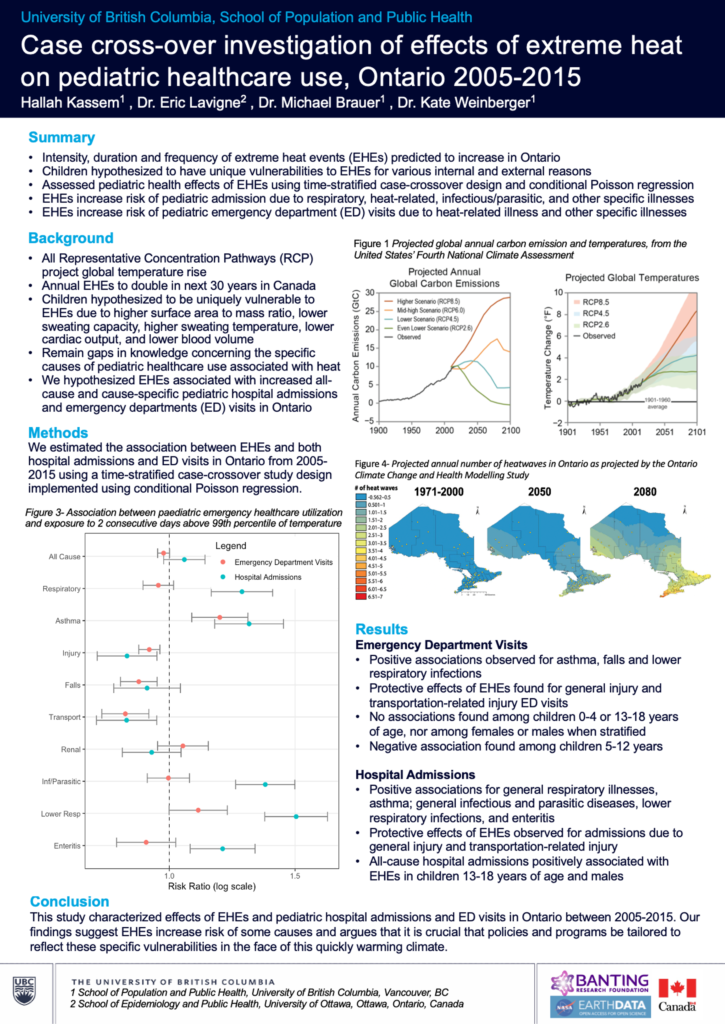Hallah Kassem
Conference 2023 Presentation
Project title
A case cross-over investigation of the associations between extreme heat and paediatric health in Ontario
Authors and Affiliations
Hallah Kassem1, Mike Brauer1, Eric Lavigne2, Kate Weinberger1
Abstract
Background
Global climate is changing and as temperatures rise, so too are the frequency and severity of extreme heat events (EHEs). In Canada, annual EHEs are estimated to double over the next 30 years. A large body of literature links extreme heat to multiple health endpoints, including heat stroke and exacerbation of other medical conditions. Compared to adults, children have a higher surface area to mass ratio, lower sweating capacity, higher temperature at which sweating begins, lower cardiac output, and lower blood volume. There remains a gap in knowledge concerning the specific causes of illness associated with heat in children.
Methods
It was hypothesized that EHEs are associated with increased emergency healthcare utilization in children in Ontario. In this case-crossover study, conditional Poisson regression was used to produce risk ratios to asses associations between heatwaves and primary causes of peadiatric admission to hospitals and visits to emergency department in Ontario.
Results
EHEs were positively associated with paediatric hospital admissions for causes of general respiratory illnesses, asthma; general heat-related illnesses, heatstroke; general infectious and parasitic diseases, lower respiratory infections, and enteritis. EHEs were also positively associated with ED visits due to asthma; drowning; general heat-related illnesses, heatstroke, dehydration; and lower respiratory infections. General injuries and transportation-related injuries were negatively associated with both hospital admissions and ED visits. All-cause ED visits were not found to be associated with EHEs when stratified by age among children 0-4 or 13-18, nor among females or males when stratified by sex. However, a negative association was found among children 5-12. In stratified analyses, all-cause hospital admissions were positively associated with children 13-18 and males.
Conclusions
This study characterized the associations between EHEs and causes of child hospital admissions and emergency department (ED) visits in Ontario. Our findings suggest that EHEs increase risk of some causes of emergency healthcare utilization. It is imperative that policies and programs be updated and tailored to reflect these specific vulnerabilities of children in the face of this quickly warming climate.

